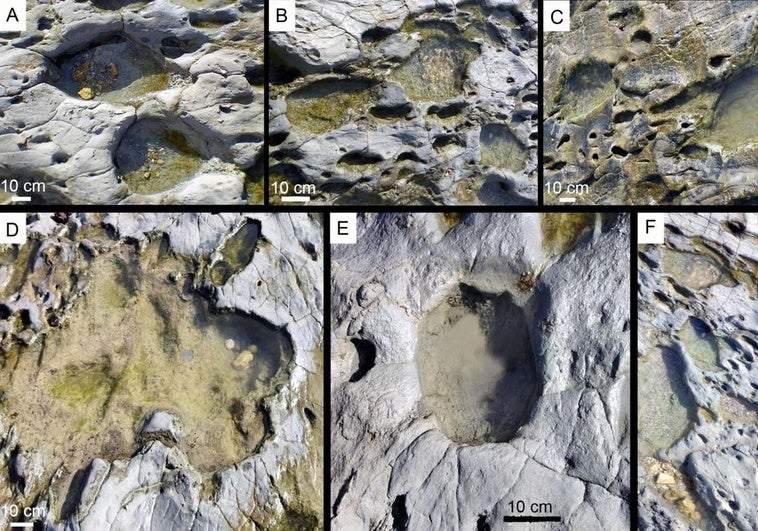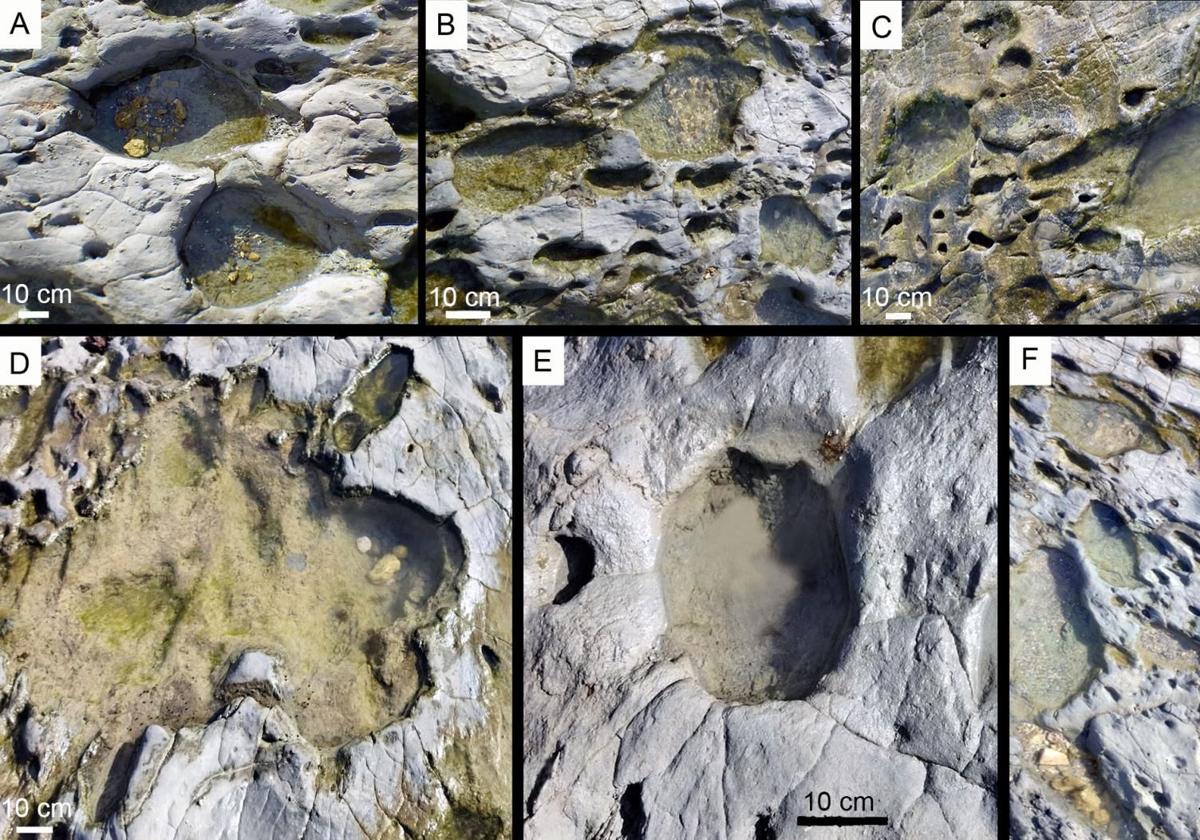
Sections
Highlight
Sections
Highlight

Europa Press
Tarifa
Wednesday, 12 February 2025
The IAPH Andalusian historical heritage institute, a research centre within the regional Ministry for Culture, as part of the team of experts led by Eduardo Mayoral of the University of Huelva, has confirmed the existence of a Pleistocene site of large mammal footprints on a beach in Tarifa (Cadiz province), dating to around 778,000 years ago. This site is the only one discovered to date with footprints from these types of mammals in mainland Europe.
According to a Junta de Andalucía statement, this discovery on one of the beaches bordering the island of San Sebastián in Tarifa is the first record of a transit zone in the Iberian peninsula with footprints leading in both directions, southwest and northeast. It is therefore the third example of this type of fossil found in the Mediterranean area (two in Italy) and the southernmost to be found on mainland Europe.

The research, which has just been published in the Journal of Palaeogeography, was presented this Monday in Cadiz at an event presided over by the regional minister for culture, Patricia del Pozo, accompanied by her deputy Macarena O'Neill, the provincial delegate for culture Tania Barcelona, and IAPH's director-general Juan José Primo.
The discovery, as mentioned by the head of the CAS centre for underwater archaeology, Milagros Alzaga, is the result of interdisciplinary research carried out by specialists from the universities of Huelva, Cantabria, Oviedo, Tübingen (Germany) and the Doñana EBD-CSIC biological station. The collaboration is managed within the framework of the Vestigium project - 'Vestigium. Archaeology and intertidal palaeobiology: the heritage on the beaches of Cadiz as a driving force for economic and social participation' - led by the IAPH.
According to the Junta de Andalucía, the Vestigium project aims to investigate and promote the research and dissemination of those little-studied vestiges of land found between the sea and the shore, that part of the coastline located between the maximum and minimum tides. The work has been carried out in five coastal landmarks in Cadiz province: Tarifa, San Fernando, Chiclana and Conil, Barbate and Cadiz city itself.
"These results are an excellent opportunity to recognise the extraordinary trajectory of the IAPH as a research institute, carrying out tireless work in the generation and transfer of knowledge," said Del Pozo.
The origin of the investigation lies in a member of the public's report of "possible dinosaur footprints" that were found by chance. Subsequently, with the surveys carried out by the IAPH, it was possible to corroborate that the traces discovered actually corresponded to a varied set of ichnites (the academic term for fossilised footprints).
The site contains 635 animal tracks from the Early Pleistocene geology period. "Tracks of artiodactyls, that is, ungulate mammals [hooved] whose limbs end in an even number of toes (giraffe, auroch [extinct specie of bovine], deer), and also of proboscideans [trunk-wielding, tusk-wearing large mammals] (elephant, mastodon, mammoth) have been identified," said Eloísa Bernáldez, head of the Palaeontology and Palaeobiology laboratory, part of the IAPH's research teams.
Bernáldez added that "the fossil footprints are imprinted on a muddy stratum from the upper middle Oligocene period, corresponding to 34-23 million years ago." They are located in an area where people commonly pass by to go diving in the sea. Therefore its conservation is a somewhat sensitive matter, but it will be accessible, once adapted, to be visited.
The results of the research carried out on this new fossil site have been published in the article 'Early Pleistocene vertebrate tracks impressed on oligocene beds from the southernmost iberian peninsula: palaeogeographic implications' published in the peer-reviewed Journal of Palaeogeography.
The journal paper's authors, according to the Junta, were Eduardo Mayoral Alfaro, Antonio Rodríguez Ramírez and Juan Antonio Morales (University of Huelva), Jérémy Duveau (University of Tübingen), Ricardo Díaz-Delgado (Doñana Biological Station, EBD-CSIC), Eloísa Bernáldez-Sánchez, Esteban García-Viñas, Mili Jiménez Melero and Milagros Alzaga (IAPH), Ana Santos (University of Oviedo) and Ignacio Díaz-Martínez (University of Cantabria).
Vestigium is a project financed with European NextGeneration EU funds as part of the Complementary Plan for R+D+I in Marine Sciences and the Spanish Recovery, Transformation and Resilience Plan (PRTR). The project "represents a unique opportunity to strengthen collaboration between researchers, governing bodies and the community, consolidating the cultural identity of the region", said the regional minister.
"With this project, Andalucía is making progress in the protection and dissemination of its historical legacy, committing itself to sustainable development where history, experimental sciences and tourism go hand in hand," stated Del Pozo.
Publicidad
Publicidad
Publicidad
Publicidad
Esta funcionalidad es exclusiva para registrados.
Reporta un error en esta noticia

Debido a un error no hemos podido dar de alta tu suscripción.
Por favor, ponte en contacto con Atención al Cliente.

¡Bienvenido a SURINENGLISH!

Tu suscripción con Google se ha realizado correctamente, pero ya tenías otra suscripción activa en SURINENGLISH.
Déjanos tus datos y nos pondremos en contacto contigo para analizar tu caso

¡Tu suscripción con Google se ha realizado correctamente!
La compra se ha asociado al siguiente email
Comentar es una ventaja exclusiva para registrados
¿Ya eres registrado?
Inicia sesiónNecesitas ser suscriptor para poder votar.